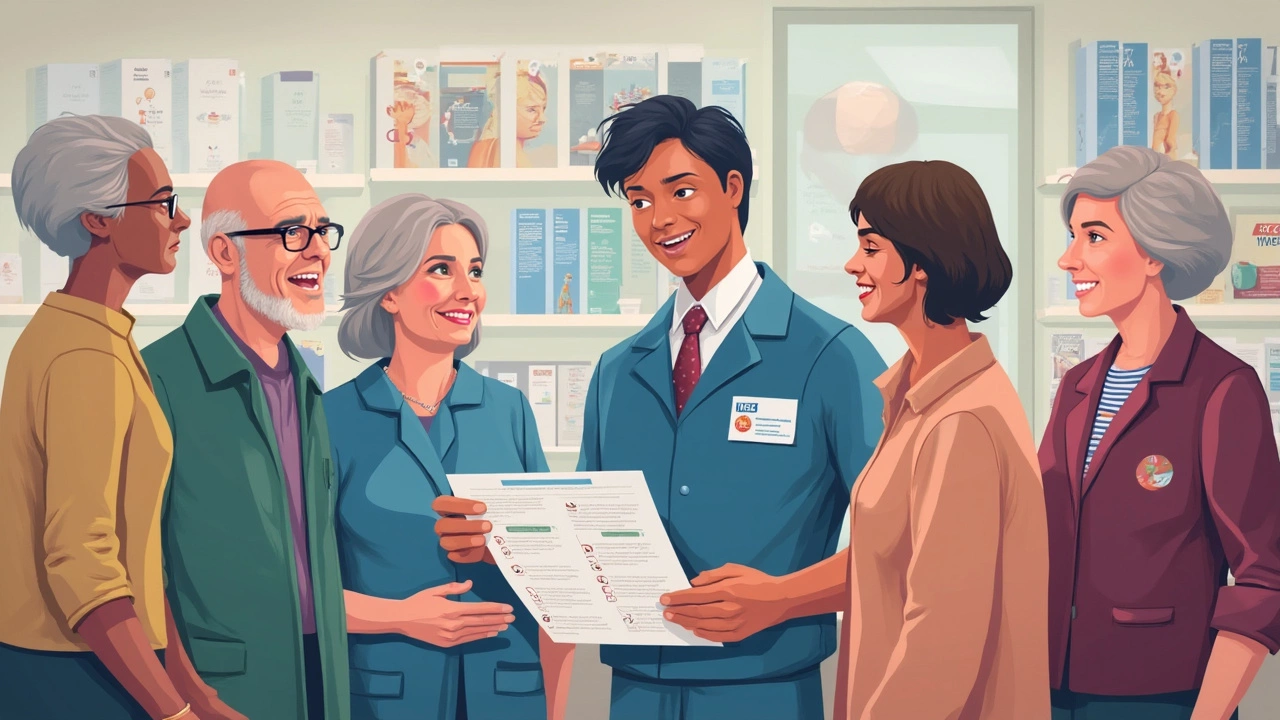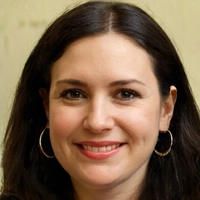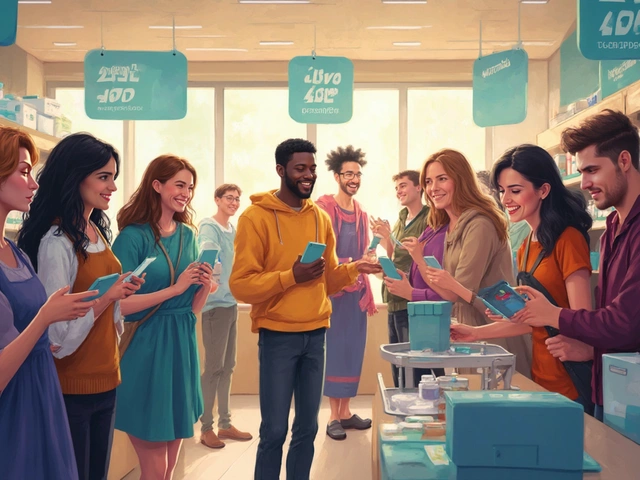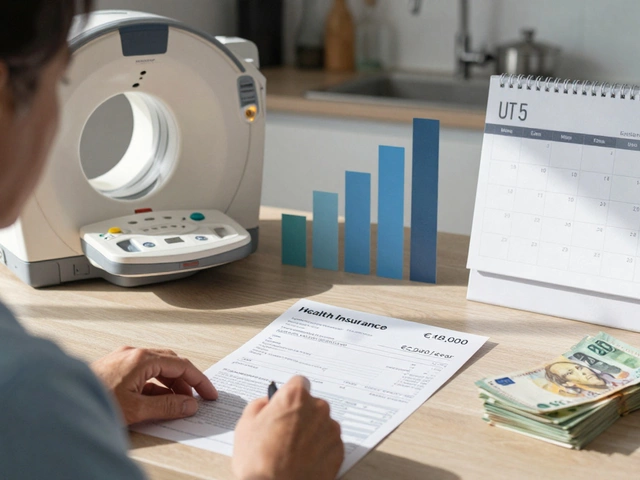Who doesn’t want free prescription coverage? You’ve probably heard about Medicare Part D, but did you know that some folks actually get it for free? If paying for prescriptions stresses you out, there are real ways to wipe out those costs—especially if you're on a tight budget.
Medicare Part D isn’t just for the wealthy or tech-savvy seniors. Whether you’re struggling to pay for daily meds or supporting family on Social Security alone, there are plans and savings programs built just for people in your shoes. Some programs, like 'Extra Help' and Medicaid, can knock your Part D premiums down to zero. Sound too good to be true? Stick with me while I break down exactly how it works, who qualifies, and what steps get you closest to free coverage.
- Medicare Part D: What It Really Covers
- Is 'Free' Part D Possible?
- The 'Extra Help' Program Explained
- Medicaid and More Ways to Qualify
- Smart Tips to Lower Your Drug Costs
- How to Start the Application Process
Medicare Part D: What It Really Covers
Medicare Part D is the part of Medicare that helps pay for your prescription drugs. Think of it as drug insurance for people on Medicare. You buy it through private insurance companies that work with Medicare, and it’s not automatic—so you have to sign up if you want it.
Here’s what Part D usually helps with:
- Many common prescription drugs, including both brand-name and generic meds
- Drugs you pick up at retail pharmacies—not ones you get at the hospital or a doctor’s office
- Some vaccines, like shingles and some travel shots
It doesn’t just pay for every random medication, though. Each plan has a list of covered drugs (called a formulary), and they decide which drugs make the cut. Plans don’t all cover the same drugs, so you really want to check before enrolling, especially if you take specific meds every day.
Costs under Part D split up like this:
| What You Pay | What It Means |
|---|---|
| Premium | Monthly amount just to have the plan |
| Deductible | The amount you cover each year before the plan pays anything |
| Copay/Coinsurance | What you pay for each prescription after you hit the deductible |
For 2025, the average basic Part D premium is about $33 per month, but some plans are as cheap as $0 in certain areas. But remember, even those “zero premium” plans can come with higher copays or different coverage for your meds.
One big point: Medicare Part D isn’t required by law. But if you skip it when you first get Medicare and change your mind later, you could pay a penalty for life. So, even if you think you don’t need it now, worth thinking it through before passing it up.
Is 'Free' Part D Possible?
Getting Medicare Part D for free isn’t just a myth—it’s possible for a lot of folks. Most people pay a monthly premium for Part D, which averages $34.50 per month in 2025. But there are real programs that pay that premium for you if your income and resources are on the lower side.
Here’s the deal: The most common way to get Part D at no cost is by qualifying for “Extra Help” (also known as the Low-Income Subsidy program) or getting full Medicaid. With Extra Help, you can pay zero for your plan’s basic premium, and your copays for prescriptions drop dramatically too. In fact, about 13 million Americans got Extra Help in 2024.
"Medicare’s Extra Help program makes prescription drug coverage affordable or free for millions of low-income seniors," says the official Medicare.gov site. "No one should have to skip medicine because of cost."
If you’re on Medicaid or one of the Medicare Savings Programs, you pretty much get Part D for free automatically. For others, it depends on your income and ‘resources’—that’s basically your money in the bank, savings, and the value of things like stocks or bonds.
| 2025 Income Limits for Extra Help (Single Person) | Resources Limit |
|---|---|
| Up to $1,883/month | Up to $17,220 |
| 2025 Income Limits for Extra Help (Married Couple) | Resources Limit |
| Up to $2,555/month | Up to $34,360 |
Think these limits look a little high? They include an allowance for burial expenses and exclude your home or car, so don’t count yourself out too soon.
Here’s the bottom line: If your monthly income or savings fall under those limits, you’ve got a strong shot at getting Medicare Part D for free through Extra Help. And remember, some states are even more generous, so always check local programs, too.
The 'Extra Help' Program Explained
If you’re searching for ways to get Medicare Part D for free, the 'Extra Help' program is your top ally. This program, also called the Low Income Subsidy, was created to boost folks who struggle to pay for their prescription drugs. It pays some or all of your premiums, deductibles, and copays for Medicare Part D coverage—sometimes wiping out your drug costs almost completely.
So, who gets this help? 'Extra Help' isn’t open to everyone. The magic here comes down to your income and assets. For 2025, you may qualify if your yearly income is below $23,000 for one person (or about $31,000 for a married couple living together) and your resources—like money in the bank, stocks, and bonds—are less than $17,000 for an individual or $34,000 for a couple. Your house and car don’t count toward these limits.
| Household | Income Limit (2025) | Resource Limit (2025) |
|---|---|---|
| Single | $23,000 | $17,000 |
| Married (living together) | $31,000 | $34,000 |
Here’s what you can expect with 'Extra Help':
- Zero or low monthly premiums on your Part D plan
- Very small (sometimes $0) deductibles
- Copays as low as $4.50 for brand-name drugs and $1.55 for generics in 2025
- No 'donut hole'—the coverage gap that usually bumps up out-of-pocket costs
If you already have Medicaid, Supplemental Security Income (SSI), or a Medicare Savings Program, you usually get 'Extra Help' automatically. If you don't, you can apply directly through Social Security, either online, by phone, or by mailing in a paper application. It’s free to apply—no hidden catch.
Don’t assume you won’t qualify. Even if you think your income is a little high, sometimes medical expenses or help you’re getting from family can still let you in. The only way to find out is to apply. If you do qualify, you could save thousands a year on prescriptions alone.

Medicaid and More Ways to Qualify
If you’re looking for a way to get Medicare Part D for free, Medicaid is a game changer. Medicaid is a state and federal program for people with low incomes, and it covers way more than just doctor visits. If you have full Medicaid, you’re already automatically signed up for Extra Help, which pays your Part D premium—sometimes every single penny of it. Your co-pays on prescriptions also drop to just a few dollars at most.
But Medicaid isn’t the only door in. There are other paths, too. If you qualify for one of the Medicare Savings Programs (MSPs), you could get your Part D premium covered as well. These MSPs look at both your income and assets, and the limits for 2025 are actually higher than a lot of folks expect—no need to have basically nothing in the bank. For example, the Qualified Medicare Beneficiary (QMB) program helps pay not only your premiums but also deductibles and copays, including for Part D.
- Full Medicaid: If you meet your state’s rules for Medicaid, you’re good to go for Extra Help. No extra paperwork needed, either—Social Security automatically adds you to the program.
- Medicare Savings Programs (MSPs): QMB, SLMB, and QI are the big three here. If approved, your premiums (and sometimes all out-of-pocket costs) can get wiped out.
- Supplemental Security Income (SSI): Most people getting SSI also automatically get Extra Help. Again, no separate application required.
Here’s one tip: Don’t assume you won’t qualify just because you have a small nest egg or a modest monthly income. States like New York and California have higher limits, and some ignore certain assets when doing the math.
Still not sure if you’re a fit? You can reach out to your local State Health Insurance Assistance Program (SHIP) or Medicaid office. They'll look over your info and walk you through the steps to see which programs fit your exact situation. Applying is free, and there’s no penalty even if you get turned down. So if you want a shot at zero-cost prescriptions, it’s worth the 30 minutes to check it out.
Smart Tips to Lower Your Drug Costs
Don’t let prescription prices eat up your grocery or gas budget. Cutting these costs is actually easier than you might think, even if you don’t qualify for totally free Medicare Part D yet. Here’s how to get your meds without emptying your wallet.
- Use a preferred pharmacy: Some Part D plans have 'preferred' pharmacies where you pay less. Check if your local pharmacy is on your plan’s preferred list and switch if you have to. You could save a chunk of money with just this one move.
- Look into generic drugs: They work the same as name brands and can cost up to 80% less. Ask your doctor if there’s a generic version of your prescription—that’s money in your pocket right away!
- Price compare: Use online tools like Medicare’s Plan Finder or GoodRx to spot which plan or pharmacy sells your meds for less. Don’t assume your current pharmacy always has the best deal. Prices can change a lot, even in the same town.
- Split higher-dose pills: Sometimes, a high-dose pill is the same price as a lower-dose version. Ask your doctor if you can safely split your pills—just make sure the pill doesn’t have a special coating and is meant to be split.
- Watch for coverage gap help: In 2025, the Medicare Part D 'donut hole' finally closes, so you pay just 25% (or less) of drug costs after you hit the initial coverage limit. Double-check the fine print each year because prices shift all the time.
- Apply for "Extra Help": This federal program is a lifesaver if you’re on a fixed income. It can cover your premiums, deductibles, and co-pays. Over 12 million people already use it—don’t miss out if you qualify.
| Tip | Average Yearly Savings (2024) |
|---|---|
| Switching to Generic Drugs | $380 |
| Using Preferred Pharmacies | $220 |
| Applying for Extra Help | $4,900* |
*Extra Help savings based on Social Security Administration estimates and covers premiums, deductibles, and drug costs for full qualifiers.
Little changes—like asking a few questions at the doctor’s office or remembering to shop around every fall—can lead to big savings. With a bit of effort, it’s totally possible to shrink your Medicare Part D costs down to something manageable—or even zero, if you’re eligible for the best help programs.
How to Start the Application Process
Ready to try for free Medicare Part D? The whole thing starts with a few simple steps, and honestly, it’s way less complicated than it looks at first glance.
First off, find out if you qualify for Medicare Part D help programs like Extra Help or Medicaid. Most people who get these benefits are either retired with lower incomes or on disability. The main thing agencies check is your yearly income and the value of your savings or investments (don’t worry, your main home and car don’t count).
Here’s how to kick things off:
- Gather your paperwork. You’ll need your Social Security number, info about checking and savings accounts, stocks or bonds (if you have any), and proof of monthly income. No guesswork—just the numbers.
- Apply for Extra Help. Go to the Social Security website, call 1-800-772-1213, or apply in person at your local Social Security office. This helps with your Part D premiums and other drug costs.
- If you think you qualify for Medicaid, hit up your state Medicaid office. Many folks who get Medicaid are already signed up for Extra Help automatically.
- Compare Part D plans. Use the official Medicare Plan Finder at medicare.gov. Just plug in your zip code and prescriptions, and you’ll see plans that work for you.
- Enroll. You can do this online, through Medicare, or call the plan itself. If you miss deadlines, don’t fret—some programs let you enroll any time if you qualify for Extra Help or Medicaid.
If you want to see how your numbers stack up, here’s a quick look at the 2025 Extra Help income and resource limits:
| Household | 2025 Income Limit | Resource Limit |
|---|---|---|
| Single | $22,590/year | $17,220 |
| Married (living together) | $30,660/year | $34,360 |
If you’re over the limit, you might still qualify if you have certain expenses like housing costs or medical bills that shrink your available money on paper. Don’t skip applying just because you’re close to the cutoff—many people are surprised when they get approved anyway.
Bottom line: The process is all about gathering your info, filling out a form or two, and asking for help if you hit a snag. There’s no penalty for trying, and every bit of coverage can help stretch your budget.




